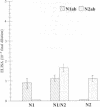Abstract
Based on the absence of serologic cross-reactivity, the neuraminidases (NAs) of influenza A viruses are divided into antigenically discrete subtypes, analogous to the hemagglutinin (HA) major antigens with which they share the virion surface. An innovative approach to influenza vaccination takes advantage of the infection-permissive nature of immunization with NA as the minor surface antigen. However, evidence that HA dominates immune response when HA and NA are presented together in the intact virion prompted investigation of possible competing effects during immunization of NA subtype mixtures ultimately required for human vaccination. Immunization of BALB/c mice with purified N1- and N2-subtype NAs demonstrated no antigenic competition in primary or secondary response. However, when homotypic or heterotypic infection followed immunization, cross-reactive antibodies between N1 and N2 were found and "reverse antigen competition" occurred with initial NA priming suppressing response to HA following infection with virus containing homologous NA. These studies of antigen mixtures have implications for the use of combined and chimeric vaccines for diseases other than influenza.
Full text
PDF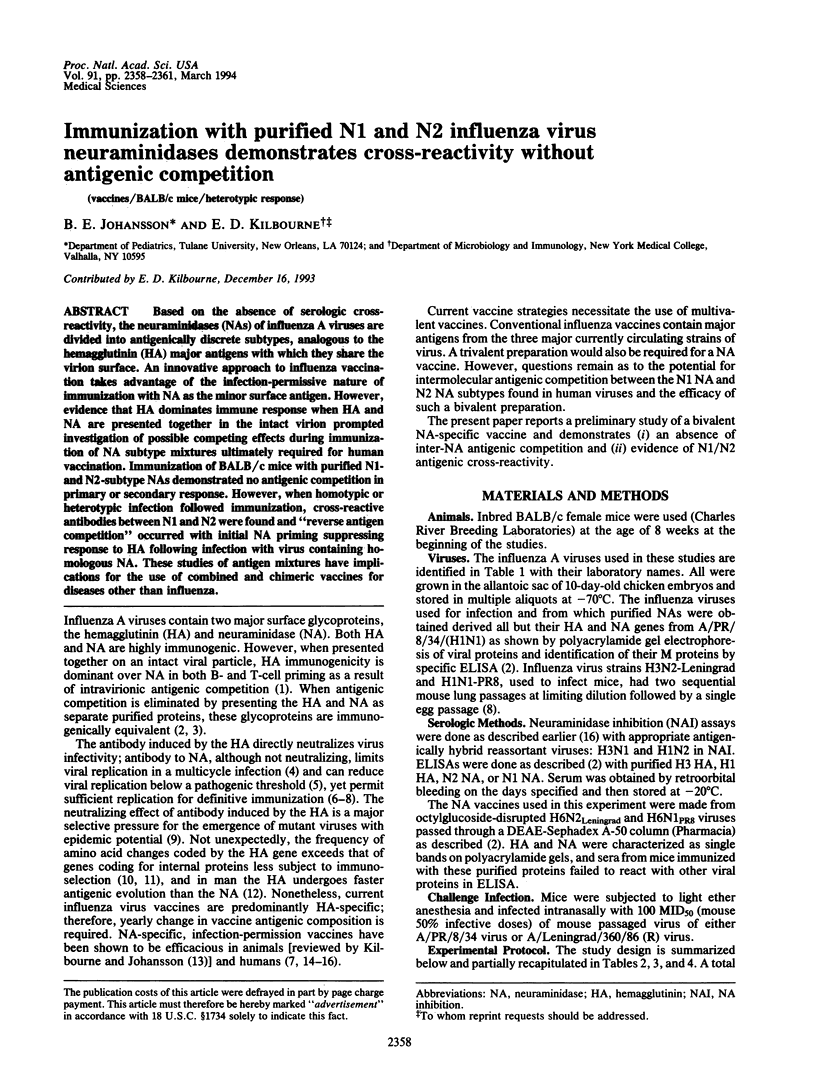
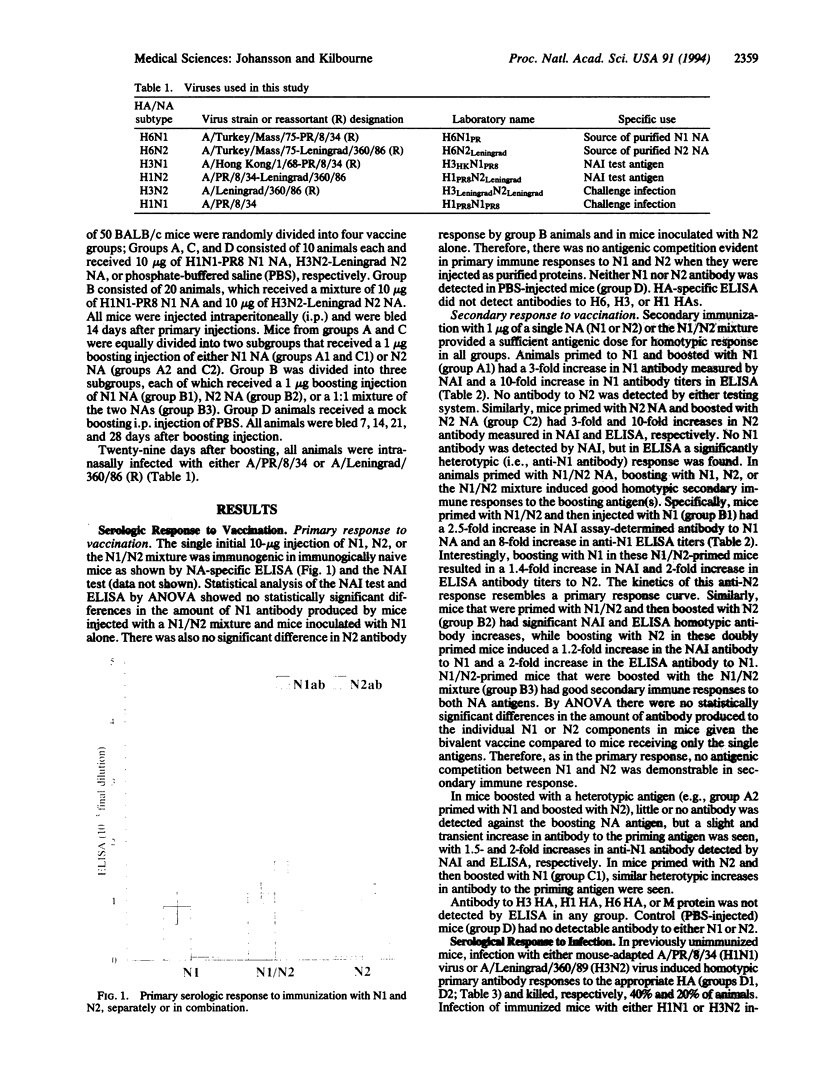
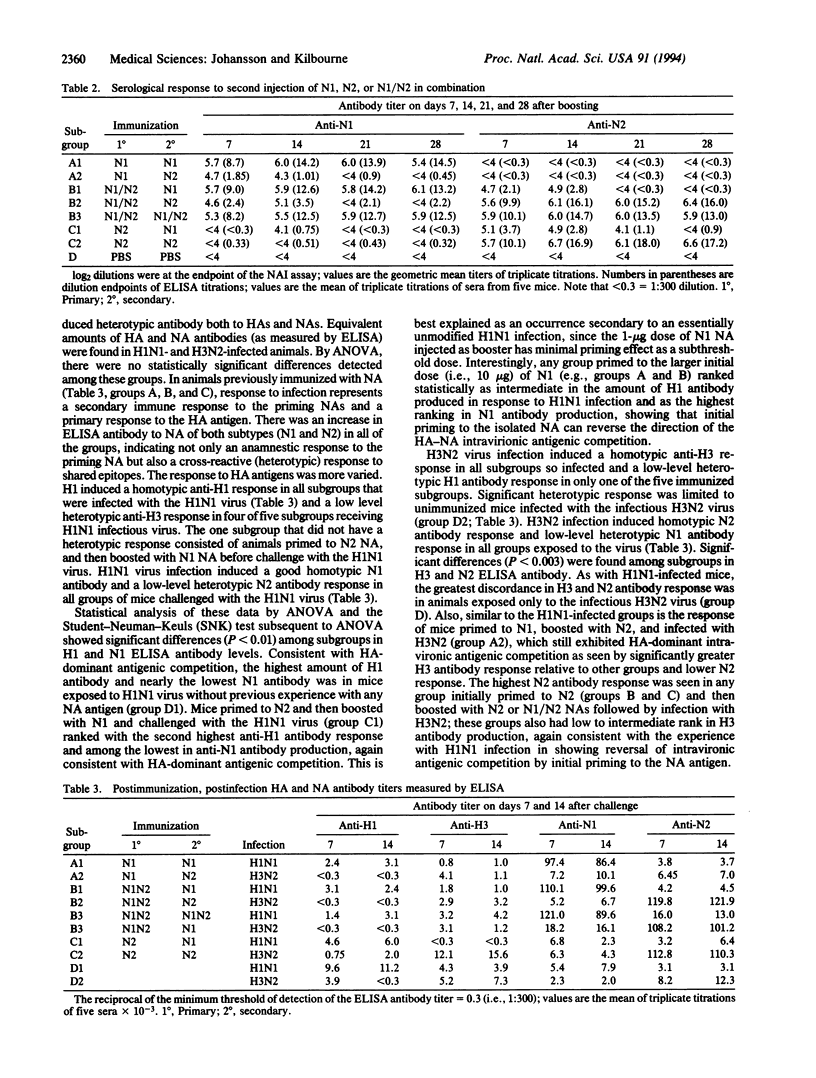
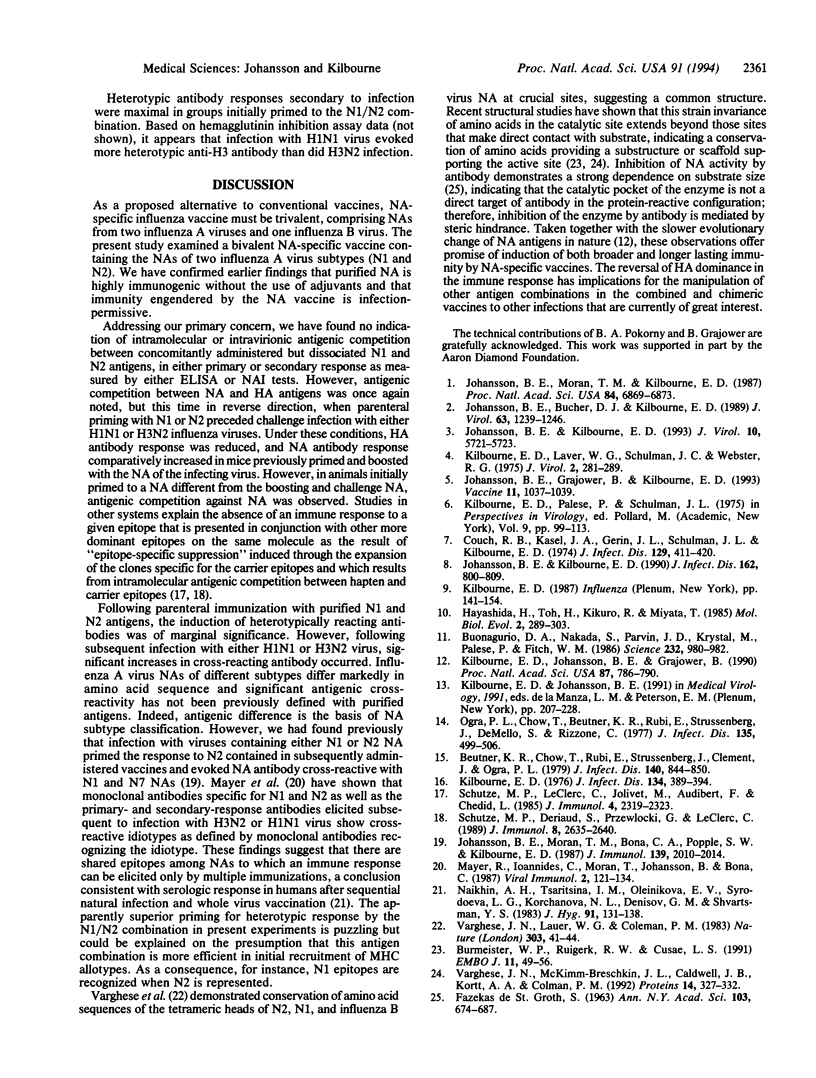
Images in this article
Selected References
These references are in PubMed. This may not be the complete list of references from this article.
- Beutner K. R., Chow T., Rubi E., Strussenberg J., Clement J., Ogra P. L. Evaluation of a neuraminidase-specific influenza A virus vaccine in children: antibody responses and effects on two successive outbreaks of natural infection. J Infect Dis. 1979 Dec;140(6):844–850. doi: 10.1093/infdis/140.6.844. [DOI] [PubMed] [Google Scholar]
- Buonagurio D. A., Nakada S., Parvin J. D., Krystal M., Palese P., Fitch W. M. Evolution of human influenza A viruses over 50 years: rapid, uniform rate of change in NS gene. Science. 1986 May 23;232(4753):980–982. doi: 10.1126/science.2939560. [DOI] [PubMed] [Google Scholar]
- Burmeister W. P., Ruigrok R. W., Cusack S. The 2.2 A resolution crystal structure of influenza B neuraminidase and its complex with sialic acid. EMBO J. 1992 Jan;11(1):49–56. doi: 10.1002/j.1460-2075.1992.tb05026.x. [DOI] [PMC free article] [PubMed] [Google Scholar]
- Colman P. M., Varghese J. N., Laver W. G. Structure of the catalytic and antigenic sites in influenza virus neuraminidase. Nature. 1983 May 5;303(5912):41–44. doi: 10.1038/303041a0. [DOI] [PubMed] [Google Scholar]
- Couch R. B., Kasel J. A., Gerin J. L., Schulman J. L., Kilbourne E. D. Induction of partial immunity to influenza by a neuraminidase-specific vaccine. J Infect Dis. 1974 Apr;129(4):411–420. doi: 10.1093/infdis/129.4.411. [DOI] [PubMed] [Google Scholar]
- Hayashida H., Toh H., Kikuno R., Miyata T. Evolution of influenza virus genes. Mol Biol Evol. 1985 Jul;2(4):289–303. doi: 10.1093/oxfordjournals.molbev.a040352. [DOI] [PubMed] [Google Scholar]
- Johansson B. E., Bucher D. J., Kilbourne E. D. Purified influenza virus hemagglutinin and neuraminidase are equivalent in stimulation of antibody response but induce contrasting types of immunity to infection. J Virol. 1989 Mar;63(3):1239–1246. doi: 10.1128/jvi.63.3.1239-1246.1989. [DOI] [PMC free article] [PubMed] [Google Scholar]
- Johansson B. E., Grajower B., Kilbourne E. D. Infection-permissive immunization with influenza virus neuraminidase prevents weight loss in infected mice. Vaccine. 1993;11(10):1037–1039. doi: 10.1016/0264-410x(93)90130-p. [DOI] [PubMed] [Google Scholar]
- Johansson B. E., Kilbourne E. D. Comparative long-term effects in a mouse model system of influenza whole virus and purified neuraminidase vaccines followed by sequential infections. J Infect Dis. 1990 Oct;162(4):800–809. doi: 10.1093/infdis/162.4.800. [DOI] [PubMed] [Google Scholar]
- Johansson B. E., Kilbourne E. D. Dissociation of influenza virus hemagglutinin and neuraminidase eliminates their intravirionic antigenic competition. J Virol. 1993 Oct;67(10):5721–5723. doi: 10.1128/jvi.67.10.5721-5723.1993. [DOI] [PMC free article] [PubMed] [Google Scholar]
- Johansson B. E., Moran T. M., Bona C. A., Popple S. W., Kilbourne E. D. Immunologic response to influenza virus neuraminidase is influenced by prior experience with the associated viral hemagglutinin. II. Sequential infection of mice simulates human experience. J Immunol. 1987 Sep 15;139(6):2010–2014. [PubMed] [Google Scholar]
- Johansson B. E., Moran T. M., Kilbourne E. D. Antigen-presenting B cells and helper T cells cooperatively mediate intravirionic antigenic competition between influenza A virus surface glycoproteins. Proc Natl Acad Sci U S A. 1987 Oct;84(19):6869–6873. doi: 10.1073/pnas.84.19.6869. [DOI] [PMC free article] [PubMed] [Google Scholar]
- Kilbourne E. D. Comparative efficacy of neuraminidase-specific and conventional influenza virus vaccines in induction of antibody to neuraminidase in humans. J Infect Dis. 1976 Oct;134(4):384–394. doi: 10.1093/infdis/134.4.384. [DOI] [PubMed] [Google Scholar]
- Kilbourne E. D., Johansson B. E., Grajower B. Independent and disparate evolution in nature of influenza A virus hemagglutinin and neuraminidase glycoproteins. Proc Natl Acad Sci U S A. 1990 Jan;87(2):786–790. doi: 10.1073/pnas.87.2.786. [DOI] [PMC free article] [PubMed] [Google Scholar]
- Kilbourne E. D., Laver W. G., Schulman J. L., Webster R. G. Antiviral activity of antiserum specific for an influenza virus neuraminidase. J Virol. 1968 Apr;2(4):281–288. doi: 10.1128/jvi.2.4.281-288.1968. [DOI] [PMC free article] [PubMed] [Google Scholar]
- Mayer R., Ioannides C., Moran T., Johansson B., Bona C. Effect of syngeneic anti-idiotypic antibody on influenza virus neuraminidase antibody response. Viral Immunol. 1987;1(2):121–134. doi: 10.1089/vim.1987.1.121. [DOI] [PubMed] [Google Scholar]
- Naikhin A. N., Tsaritsina I. M., Oleinikova E. V., Syrodoeva L. G., Korchanova N. L., Denisov G. M., Shvartsman YaS The importance of antineuraminidase antibodies in resistance to influenza A and immunologic memory for their synthesis. J Hyg (Lond) 1983 Aug;91(1):131–138. doi: 10.1017/s0022172400060101. [DOI] [PMC free article] [PubMed] [Google Scholar]
- Ogra P. L., Chow T., Beutner K. R., Rubi E., Strussenberg J., DeMello S., Rizzone C. Clinical and immunologic evaluation of neuraminidase-specific influenza A virus vaccine in humans. J Infect Dis. 1977 Apr;135(4):499–506. doi: 10.1093/infdis/135.4.499. [DOI] [PubMed] [Google Scholar]
- Schutze M. P., Deriaud E., Przewlocki G., LeClerc C. Carrier-induced epitopic suppression is initiated through clonal dominance. J Immunol. 1989 Apr 15;142(8):2635–2640. [PubMed] [Google Scholar]
- Schutze M. P., Leclerc C., Jolivet M., Audibert F., Chedid L. Carrier-induced epitopic suppression, a major issue for future synthetic vaccines. J Immunol. 1985 Oct;135(4):2319–2322. [PubMed] [Google Scholar]
- Varghese J. N., McKimm-Breschkin J. L., Caldwell J. B., Kortt A. A., Colman P. M. The structure of the complex between influenza virus neuraminidase and sialic acid, the viral receptor. Proteins. 1992 Nov;14(3):327–332. doi: 10.1002/prot.340140302. [DOI] [PubMed] [Google Scholar]



